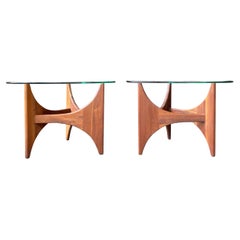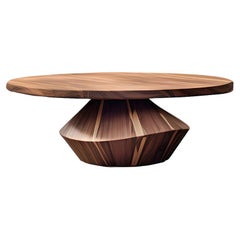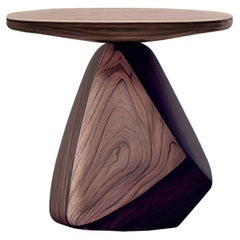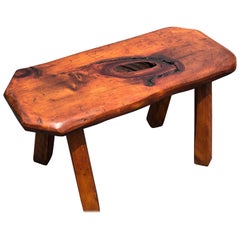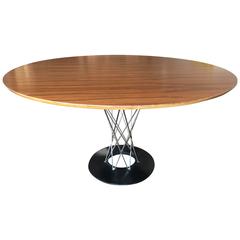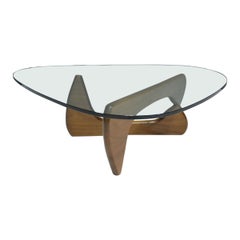Noguchi Table Walnut
Vintage 1960s American Mid-Century Modern End Tables
Glass, Walnut
2010s Mexican Mid-Century Modern Coffee and Cocktail Tables
Hardwood
2010s Mexican Mid-Century Modern Side Tables
Hardwood, Walnut
Vintage 1950s American Mid-Century Modern Table Lamps
Fiberglass, Walnut
Vintage 1960s Mid-Century Modern Benches
Wood, Walnut
Recent Sales
Vintage 1960s American Mid-Century Modern Dining Room Tables
Steel
21st Century and Contemporary American Mid-Century Modern Coffee and Coc...
Glass, Walnut
Early 2000s North American Mid-Century Modern Coffee and Cocktail Tables
Walnut
Early 2000s North American Mid-Century Modern Coffee and Cocktail Tables
Walnut
Mid-20th Century American Mid-Century Modern Table Lamps
Walnut
Early 2000s American Mid-Century Modern Coffee and Cocktail Tables
Walnut, Glass
Vintage 1940s German Mid-Century Modern Coffee and Cocktail Tables
Glass, Walnut
Vintage 1960s Dining Room Tables
Mid-20th Century American Modern Coffee and Cocktail Tables
Stone, Marble
Vintage 1950s American Mid-Century Modern Coffee and Cocktail Tables
Aluminum
Vintage 1960s American Mid-Century Modern Dining Room Tables
Walnut
21st Century and Contemporary American Coffee and Cocktail Tables
Glass, Walnut
Vintage 1960s American Mid-Century Modern Coffee and Cocktail Tables
Glass, Walnut
20th Century American Mid-Century Modern Coffee and Cocktail Tables
Marble
20th Century American Mid-Century Modern Coffee and Cocktail Tables
Glass, Wood, Walnut
Vintage 1950s American Mid-Century Modern Table Lamps
Fiberglass, Walnut
Vintage 1950s American Mid-Century Modern Coffee and Cocktail Tables
Laminate, Walnut
Vintage 1960s American Mid-Century Modern Coffee and Cocktail Tables
Glass, Wood, Walnut
Vintage 1960s American Mid-Century Modern Coffee and Cocktail Tables
Glass, Wood, Walnut
21st Century and Contemporary Mid-Century Modern Coffee and Cocktail Tables
Stained Glass, Walnut
Vintage 1970s North American Mid-Century Modern Coffee and Cocktail Tables
Glass
Mid-20th Century American Mid-Century Modern Coffee and Cocktail Tables
Glass, Walnut
Vintage 1960s Mid-Century Modern Coffee and Cocktail Tables
Glass, Walnut
Early 2000s American Coffee and Cocktail Tables
Glass, Walnut
Vintage 1950s American Mid-Century Modern End Tables
Glass, Walnut
Vintage 1940s American Mid-Century Modern Coffee and Cocktail Tables
Walnut
Vintage 1950s American Mid-Century Modern End Tables
Glass, Walnut
Mid-20th Century American Mid-Century Modern Coffee and Cocktail Tables
Glass, Walnut
Vintage 1950s American Mid-Century Modern Coffee and Cocktail Tables
Metal
Vintage 1940s American Mid-Century Modern Coffee and Cocktail Tables
Glass, Walnut
Vintage 1950s American Mid-Century Modern Coffee and Cocktail Tables
Glass, Walnut
Mid-20th Century Mid-Century Modern Table Lamps
Walnut
Vintage 1950s American Mid-Century Modern Coffee and Cocktail Tables
Glass, Walnut
20th Century American Mid-Century Modern Coffee and Cocktail Tables
Glass, Walnut
Vintage 1970s American Mid-Century Modern Coffee and Cocktail Tables
Aluminum
Vintage 1940s American Mid-Century Modern Coffee and Cocktail Tables
Walnut
Vintage 1970s American Mid-Century Modern Coffee and Cocktail Tables
Glass, Walnut
20th Century American Coffee and Cocktail Tables
Walnut, Glass
Vintage 1940s American Mid-Century Modern Coffee and Cocktail Tables
Glass, Walnut
Vintage 1950s American Mid-Century Modern End Tables
Glass, Walnut
20th Century American Coffee and Cocktail Tables
Walnut, Glass
Vintage 1960s American Coffee and Cocktail Tables
Walnut
Vintage 1950s American Coffee and Cocktail Tables
Glass, Walnut
Vintage 1950s American Coffee and Cocktail Tables
Walnut, Glass
Vintage 1960s American Coffee and Cocktail Tables
Vintage 1950s American Coffee and Cocktail Tables
Walnut, Glass
Vintage 1940s American Coffee and Cocktail Tables
Walnut, Glass
20th Century American Coffee and Cocktail Tables
Aluminum
Vintage 1960s Mexican Dining Room Sets
Steel
20th Century American Mid-Century Modern Coffee and Cocktail Tables
Glass, Walnut
People Also Browsed
21st Century and Contemporary Vietnamese Mid-Century Modern Game Tables
Leather, Wood
Vintage 1920s French Louis XV Sofas
Fabric
21st Century and Contemporary Italian Mid-Century Modern Dining Room Tables
Travertine
Antique 19th Century French Country Dining Room Tables
Iron
Antique Late 19th Century French Cabinets
Glass, Oak
21st Century and Contemporary Italian Modern Wall Lights and Sconces
Brass
Early 20th Century Danish Brutalist Desks and Writing Tables
Oak
Vintage 1980s Italian Mid-Century Modern Chandeliers and Pendants
Gold Plate
Antique Mid-18th Century German Baroque Commodes and Chests of Drawers
Pine, Walnut
21st Century and Contemporary Books
Paper
Antique Early 1800s English Georgian Beds and Bed Frames
Upholstery, Mahogany
Vintage 1960s Danish Scandinavian Modern Chairs
Papercord, Oak
21st Century and Contemporary French Stools
Bronze
2010s American Mid-Century Modern Settees
Stainless Steel
21st Century and Contemporary American Mid-Century Modern Benches
Bronze
21st Century and Contemporary Portuguese Mid-Century Modern Coffee and C...
Marble, Carrara Marble, Onyx, Travertine, Gold Leaf
Noguchi Table Walnut For Sale on 1stDibs
How Much is a Noguchi Table Walnut?
Finding the Right Tables for You
The right vintage, new or antique tables can help make any space in your home stand out.
Over the years, the variety of tables available to us, as well as our specific needs for said tables, has broadened. Today, with all manner of these must-have furnishings differing in shape, material and style, any dining room table can shine just as brightly as the guests who gather around it.
Remember, when shopping for a dining table, it must fit your dining area, and you need to account for space around the table too — think outside the box, as an oval dining table may work for tighter spaces. Alternatively, if you’ve got the room, a Regency-style dining table can elevate any formal occasion at mealtime.
Innovative furniture makers and designers have also redefined what a table can be. Whether it’s an unconventional Ping-Pong table, a brass side table to display your treasured collectibles or a Louis Vuitton steamer trunk to add an air of nostalgia to your loft, your table can say a lot about you.
The visionary work of French designer Xavier Lavergne, for example, includes tables that draw on the forms of celestial bodies as often as they do aquatic creatures or fossils. Elsewhere, Italian architect Gae Aulenti, who looked to Roman architecture in crafting her stately Jumbo coffee table, created clever glass-topped mobile coffee tables that move on bicycle tires or sculpted wood wheels for Fontana Arte.
Coffee and cocktail tables can serve as a room’s centerpiece with attention-grabbing details and colors. Glass varieties will keep your hardwood flooring and dazzling area rugs on display, while a marble or stone coffee table in a modern interior can showcase your prized art books and decorative objects. A unique vintage desk or writing table can bring sophistication and even a bit of spice to your work life.
No matter your desired form or function, a quality table for your living space is a sound investment. On 1stDibs, browse a collection of vintage, new and antique bedside tables, mid-century end tables and more .
- What is a Noguchi table made of?1 Answer1stDibs ExpertJune 15, 2023The Noguchi table is made out of wood and plate glass. A sculptor, painter, ceramicist and furniture and lighting designer, Isamu Noguchi was one of the most prolific and protean creative forces of the 20th century and a key figure in the development of organic modernism. Noguchi’s sculptures and designs share a common spirit: one of lyrical abstraction, tempo and flow and harmonious balance. Comprising just two materials, wood and glass, the coffee table is visually complex yet ingenious in its simplicity. Two interlocking, identical wood pieces act as the base of Noguchi’s design, and they’re covered with a glass top. Due to the base’s asymmetrical form, the table looks different from any angle — and the clear top ensures that no angle is ever obscured. On 1stDibs, find an assortment of Isamu Noguchi tables.
- Who made the Noguchi table?1 Answer1stDibs ExpertApril 5, 2022Isamu Noguchi made the Noguchi table. The Japanese artist and designer created the Modernist glass-top table in 1947. Today, Herman Miller continues to manufacture tables based on his design. Shop a range of Noguchi tables from top sellers around the world on 1stDibs.
- 1stDibs ExpertMarch 3, 2023The signature on a Noguchi table is on the glass top, usually along an edge. On many pieces, the signature also appears on the underside of the base, along with the Herman Miller brand logo. Find a collection of Noguchi tables on 1stDibs.
- Is the Noguchi table stable?1 Answer1stDibs ExpertMay 5, 2023Yes, the Noguchi table is stable due to the unique design of the base. Its two parts lock together, creating a tripod that ensures stability beneath the gleaming glass top while lending the table an open, weightless quality. In 1944, Isamu Noguchi created the first version of his classic coffee table as a riff on a piece he designed for former MoMA president, A. Conger Goodyear, five years earlier. According to design lore, industrial designer, journalist and Herman Miller design director George Nelson visited Noguchi while working on an article titled “How to Make a Table” and found him at work on a prototype for the piece that would become the Noguchi coffee table, which was later produced by Herman Miller. On 1stDibs, shop a selection of Noguchi tables.
- 1stDibs ExpertApril 5, 2022The right table to go with a Noguchi sofa is really a matter of preference. Noguchi’s own iconic coffee table is a common pairing for their freeform sofas. On 1stDibs, you’ll find a large collection of vintage and contemporary Isamu Noguchi furniture from some of the world’s top sellers.
- 1stDibs ExpertApril 5, 2022Genuine Noguchi tables weigh around 155 pounds. An iconic style since the 1940s, new examples of Isamu Noguchi’s tables are available from a number of different vendors. Shop a collection of vintage and contemporary Noguchi furniture on 1stDibs.
- 1stDibs ExpertApril 5, 2022Styling a Noguchi coffee table really depends on the space you’re placing it in. The possibilities are far-reaching, so consider the colors and coordination of the other furniture and fixtures around the table. Noguchi tables look beautiful on their own or styled with flowers, books or pottery. Shop a selection of Isamu Noguchi pieces on 1stDibs.
- 1stDibs ExpertApril 5, 2022To authenticate a Noguchi table, first look for the signature of Isamu Noguchi on the table’s edge and base. Next, check the wood to see if it’s made of solid hardwood. Consult the brand’s website to compare exact proper dimensions since fakes will often be a little off. On 1stDibs, shop a collection of expertly-vetted Noguchi furniture.
- 1stDibs ExpertApril 5, 2022To authenticate your Noguchi coffee table, there are three different marks to look for. Isamu Noguchi’s signature will be on the edge of the table and on a medallion under the base. Even under the medallion, you will find Noguchi’s initials. Shop a collection of properly vetted Noguchi pieces from some of the world’s top sellers on 1stDibs.
- 1stDibs ExpertApril 5, 2022The original Noguchi table is made in four different color options: black, white oak, white ash and walnut. These color options apply to the base of the table, which is made of wood. The top is made of clear glass.The table was designed in 1948 by Isamu Noguchi for the legendary furniture maker Herman Miller. On 1stDibs, shop a selection of Noguchi tables.
- 1stDibs ExpertApril 5, 2022The wooden base of Noguchi coffee tables are available in multiple finishes such as black, walnut and natural cherry for color matching with your floor. Placing a rug underneath the table will also change the color dynamic. On 1stDibs, find vintage and contemporary Noguchi coffee tables from some of the world’s top sellers.
- 1stDibs ExpertApril 5, 2022There is no one proper way to place chairs around a Noguchi coffee table. Your ideal placement will depend on the space you’re using and the chairs that you’ve chosen. In 1944, Noguchi created the first version of his classic glass-topped coffee table as a riff on a piece he designed for former MoMA president, A. Conger Goodyear, a few years earlier. Legendary Michigan manufacturer Herman Miller began to produce the design in 1948. On 1stDibs, find a number of Isamu Noguchi coffee tables from some of the world’s top sellers.
- 1stDibs ExpertApril 5, 2022To care for a walnut veneer table, dust it with a soft, dry cloth regularly, moving in the direction of the grain. Sop up spills promptly to reduce the risk of staining. When deeper cleaning is necessary, use a soft cloth and a cleaning product formulated for wood. You'll find a wide variety of walnut veneer tables on 1stDibs.
Read More
The Ultimate Guide to Types of Tables for the Home
Whether you’re just moving in or ready to give your home a makeover, our guide will give you pointers on tables that are fitting for every room, nook and hallway.
May’s Most Popular Interiors on Instagram
Our feed is filled with the world's most beautiful spaces. See the rooms our followers have deemed the best of the best this month.
New Orleans’ Lee Ledbetter Makes Design Magic by Mixing Past and Present
The Louisiana-born and -bred architect talks to 1stdibs about the art of making timeless places that matter.
Desert Modern Designer Arthur Elrod Finally Gets His Day in the Sun
The Palm Springs interior decorator developed a mid-century style that defined the vacation homes of celebrities and other notables, including Bob Hope and Lucille Ball.
From the Hamptons to Palm Springs, FormArch’s Homes Embody Both Comfort and Cool
The houses from this New York studio cloak modernist tendencies within what are often more traditional trappings.
